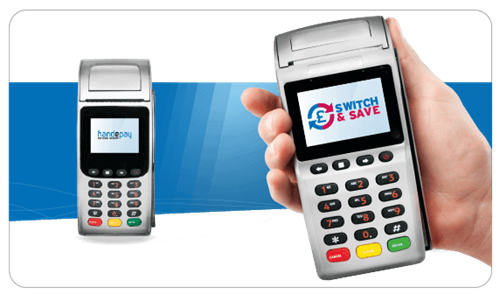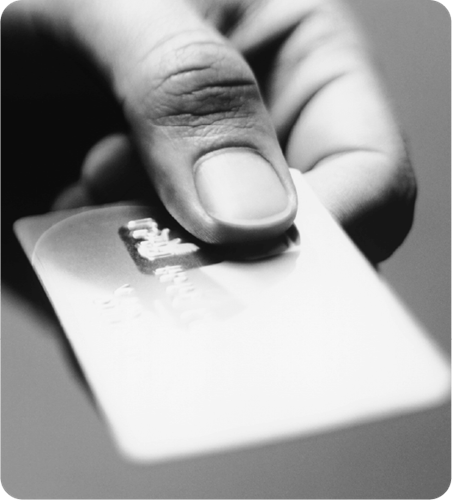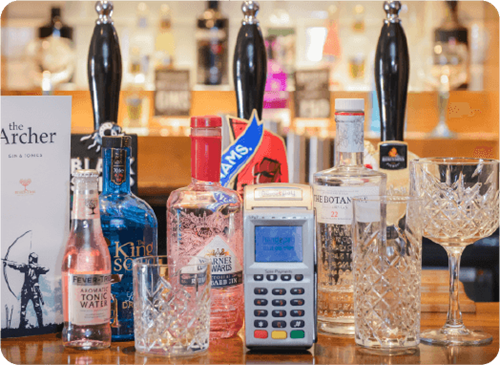What is a card reader & how do they work?
Card reader technology is an essential piece of the puzzle when it comes to credit and debit card transactions.
Most people reading this will probably have a basic understanding of card readers and the key role they have to play across thousands of businesses up and down the country.
However, it’s especially important for business owners to be aware of the different types of card readers available - and the wide range of benefits they can bring to the table.
Let’s cover the fundamental points first…
What is a card reader?
A card reader is an electronic data input device that processes card transactions. It is also called a card machine or card terminal (depending on which you prefer).
Physical card readers come in a variety of shapes and sizes, but they generally look similar.
Traditionally, the device consists of a screen, keypad and most importantly - one, or multiple features that enable some form of engagement with the payment card.
This might include
- A feature that enables the card to be physically inserted
- A feature that enables the card to be swiped
- A separate pin pad
- Or, a feature that enables the device to process contactless payments
...but more on that to follow.


How do card readers work?
Card readers read the data presented by the payment card.
This can be facilitated via Chip and PIN or contactless (again, you can discover how both methods work in greater details as you continue scrolling down the page).
But, broadly speaking - the process is probably best defined in four simple steps:
- Authentication - the customer presents their card to the terminal so it can authenticate the embedded data held in the chip inside.
- Verification - the merchant’s processing provider will then make contact with the debit/credit card issuer (i.e. the organisation who issued the card, e.g. NatWest or Barclays) to verify the card.
- Authorisation - The debit/credit card issuer will then check the cardholder’s account funds in order to authorise the payment.
- Confirmation - Once the payment has been authorised, a response is sent back to the card terminal informing the merchant that the transaction has been approved.
It may sound like a long, drawn-out process - but when you consider that the whole process takes place in just a few seconds, you’ll realise just how sophisticated card reader technology has become!
How do Chip and PIN card readers work?
Your customer inserts their card into the card reader before entering their 4-digit PIN code using the keypad.
The chip within the payment card will then interact with the reader - transferring the customer’s encrypted transaction data to merchant account of the vendor (as explained above).
This data is then approved and processed, before the customer’s funds are securely transferred across to the merchant’s business bank account. Chip and PIN card readers were introduced more than a decade ago, replacing the traditional swipe and sign method.
How do contactless card readers work?
short-range wireless technology to engage with a payment card. This technology is often referred to as Radio Frequency Identification (RFID).
In simple terms, this means that the customer can tap or hover their card within a short distance of the card reader to make the payment.
Once the terminal beeps - the payment has been completed. It’s as straightforward as that.
This makes it much quicker than the Chip and PIN method, as the customer isn’t required to enter their PIN code into the device.
However, although this reduces queue time for customers, the absence of 4-digit PIN entry makes the process less secure in some ways - which is why there is a £45 transaction limit in place to increase security for customers using contactless.
How do Apple, Google and Samsung Pay card readers work?
First of all - Apple Pay, Google Pay and Samsung Pay are mobile contactless payment systems.
These are also often referred to as digital wallet services, which enable a customer to make contactless card payments via their mobile device (whether that’s an Apple, Android for G Pay, or Samsung device).
Therefore, the card readers that can facilitate Apple, Google and Samsung Pay payments are RFID contactless card readers that can engage with the Near Field Communication (NFC) technology used by compatible digital wallet devices.
In order for the card reader to process the payment in this instance, the customer would need to initiate their digital wallet (this varies depending on which device they use), bring their device within range of the card reader - and wait for the beep, just like you would with a normal contactless card transaction.
The NFC technology enables the device to transmit the transactional data required to authenticate the payment.
What types of card readers are there?
There are a number of different types of devices that could be described as ‘card readers’.
Typically the term ‘card reader’ might refer to the smaller devices that are typically provided on a PAYG basis. These smaller devices offer the same contactless and Chip & PIN functionality - however the POS software that enables them to work is run from an app on your smart device.
However, as described above - ‘card reader’ is a name widely used for all terminals. They’re used by merchants in a variety of different ways - and we’ll describe these in more detail below.
Countertop card readers
When using a countertop card reader, the merchant facilitates the transaction from a static point of sale - the counter.
This means that the card reader stays on the counter - and the customer therefore needs to come to the counter to make the payment.
Countertop card readers are used by a range of different businesses. You’ll find that they’re especially common in the retail industry in particular.
Mobile card readers
Mobile card readers enable the merchant to take payments while on the move.
They connect via a roaming SIM card and process payments using GPRS technology. As long as there is network coverage, you can accept payments wherever you like.
This makes them a highly valuable device for a variety of different businesses, including tradespeople and delivery couriers.
Portable card readers
While countertop card readers require the customer to come to them, portable card readers enable the opposite.
These types of transactions require the card reader to be brought to the customer. Just think about a restaurant, for example.
When you want to pay the bill, the waiter will bring the card reader over to your table (assuming you’re paying by card, of course). Portable card readers connect via WiFi - so the range of connectivity is smaller than a mobile card machine, which means it’s use is restricted to one particular site.
The benefits of using a credit card reader
The benefits of using card readers across your business are wide ranging. Beyond the fact that fewer people are using cash as a payment method in general (UK Finance predicts that cash will only account for 9% of all payments by 2028) there are a few reasons why card readers are such a valuable asset:
- They provide a faster and more efficient way for customers to pay - reducing queue times
- They provide more choices for customers. Depending on the type of card reader - more often than not, they can choose what type of card they want to pay with, and whether they do this via swipe, Chip & PIN, contactless, or via their digital wallet (Samsung Pay, Google Pay, Apple Pay etc.)
- Card payments are generally more secure for businesses i.e. you can transfer income across into your business account rather than keep lots of cash on site
- Taking more payments via card enables you to collect sales data that may be of use to your business


Get started with a card reader
For more information on card readers - feel free to get in touch with Handepay.
We provide payment processing services to hundreds of businesses up and down the country - so we like to think we know our stuff when it comes to card readers.
Ask us anything about the different types of card readers, card reader technology, security - or even enquire about how we can help you get set up with card readers and start taking card payments today.


